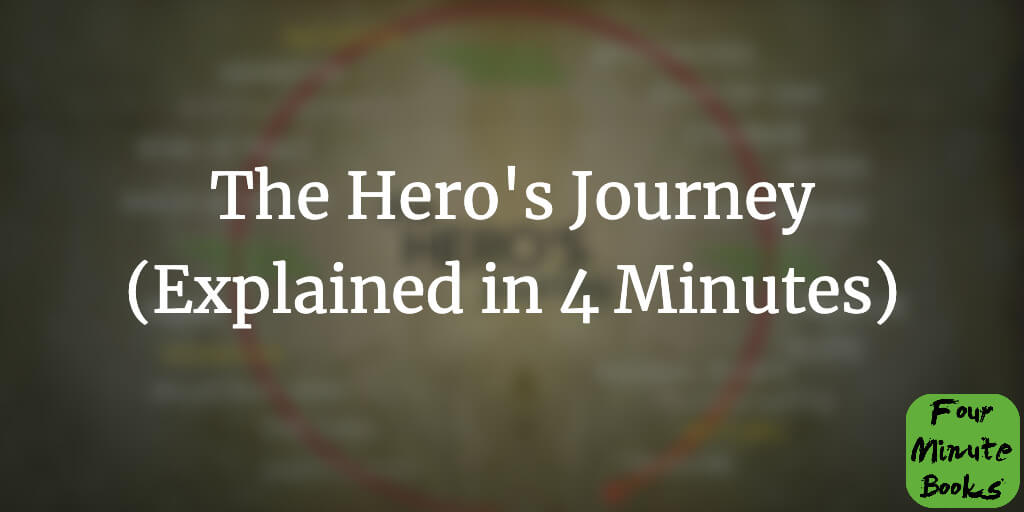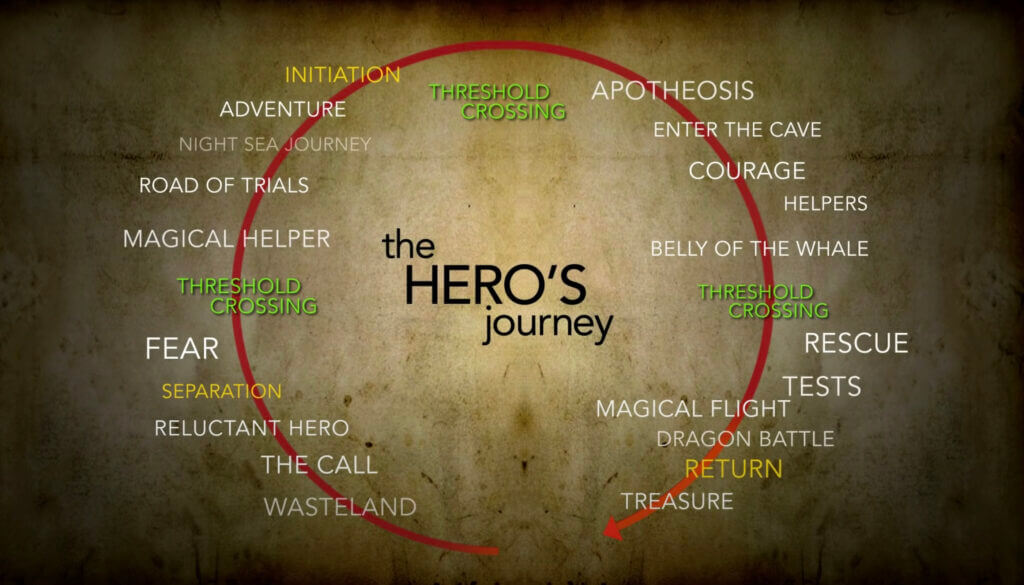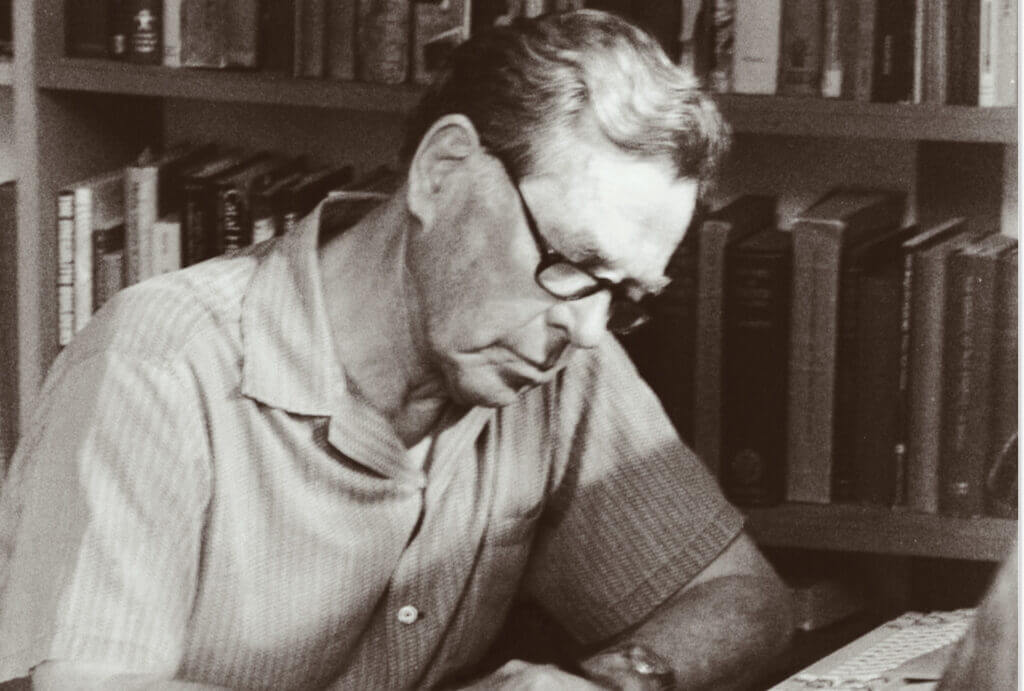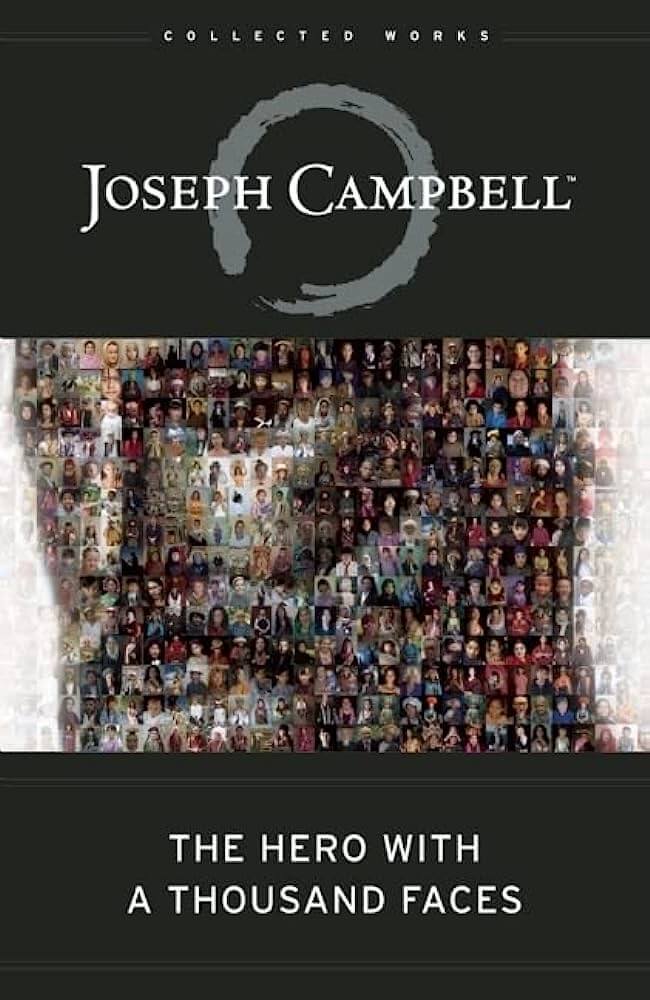
What is the hero’s journey? How does this universal story template apply to your life? And how can you use it to tell great stories, be it as a creative or at the dinner table?
Hi! My name is Nik. I’m a self-taught writer from Germany with nine years of experience. I’ve used the hero’s journey and various other storytelling frameworks in many of my essays. Today, I’ll teach you everything you need to know about this concept that’s both important for creativity and useful in life — and I’ll try to do it in just about 4 minutes!
Table of Contents
What Is “The Hero’s Journey?”
The hero’s journey is a circular sequence of events underlying almost any story or adventure. It describes the path a protagonist must take after they set out to accomplish some goal.
The original term for the hero’s journey was “the monomyth.” Could a singular (mono) explanation lie behind any story (myth), from Christianity to Buddhism to the Gilgamesh epic to Harry Potter? The man behind the idea, Joseph Campbell, thought so. He broke that explanation down into 3 acts and 17 steps. In his own words:
“A hero ventures forth from the world of common day into a region of supernatural wonder: fabulous forces are there encountered and a decisive victory is won: the hero comes back from this mysterious adventure with the power to bestow boons on his fellow man.”
The 3 acts are:
- Departure: The hero lives in the status quo of her ordinary world. She receives a call to adventure but hesitates to accept it.
- Initiation: With some help, the hero finally crosses into the special world, where trials compound into a big crisis. The hero must grow as a human being to survive the ordeal and gain a reward.
- Return: With ease or with difficulty, the hero returns to her ordinary world, forever changed. A new status quo arrives, and the hero shares her reward, be it knowledge or treasure, with others.
The 17 stages are:
- The Call to Adventure
- Refusal of the Call
- Supernatural Aid
- The Crossing of the First Threshold
- Belly of the Whale
- The Road of Trials
- The Meeting with the Goddess
- Woman as the Temptress
- Atonement with the Father
- Apotheosis
- The Ultimate Boon
- Refusal of the Return
- The Magic Flight
- Rescue from Without
- The Crossing of the Return Threshold
- Master of the Two Worlds
- Freedom to Live
Here’s a graphic from the excellent documentary Finding Joe that shows most of the original stages:

Who Came Up With This Idea?

The earliest academic studies of heroes and myths go back to the late 19th century, but the man who really put this idea on the map was Joseph Campbell. Campbell was a writer and professor, and he compared myths across many different cultures, often in the context of religion.
In 1949, Campbell published his findings, including his original 3-act, 17-part structure in a book called The Hero With a Thousand Faces. I don’t know how popular the book was upon release, but after George Lucas admitted to being inspired by Campbell’s work when making Star Wars (1977), it took off. It has now sold well over a million copies.
Campbell taught literature at the Sarah Lawrence College in New York for 38 years. He also published several other books about the monomyth and spread his ideas through interviews, documentaries, and other media. He died in 1987 at 83 years old, but with the hero’s journey, he left a profound legacy.
What Does The Hero’s Journey Look Like in Practice?
Today, more than 70 years after its first appearance, the hero’s journey comes in countless variations and interpretations. When modern creatives rely on the concept to write books and make movies, they most commonly use a condensed 12-step version. Christopher Vogler, a Hollywood screenwriter working at Disney, first shared it in a company memo in 1985. Here it is:
- The Ordinary World
- The Call to Adventure
- Refusal of the Call
- Meeting with the Mentor
- Crossing the First Threshold
- Tests, Allies, and Enemies
- Approach to the Innermost Cave
- The Ordeal
- Reward
- The Road Back
- The Resurrection
- Return with the Elixir
Here’s a picture from a TED-Ed video with another, slightly different but similar 12-step version:

To illustrate that the template applies to almost any story, people most commonly use movies, since they come with visuals. However, it holds true for books, poems, music videos, and talks as well — at least the good ones. Here’s a breakdown for the first Iron Man movie:
- The Ordinary World: Tony Stark sells weapons to whoever will pay him the most.
- The Call to Adventure: Tony is hurt and kidnapped by terrorists using his weapons.
- Refusal of the Call: Tony feels paralyzed and is about to just give up and die.
- Meeting with the Mentor: Yinsen, a fellow captive, helps him get his drive back.
- Crossing the First Threshold: Instead of the missile the terrorists asked for, Tony builds the first version of his Iron Man suit and uses it to escape.
- Tests, Allies, and Enemies: After his initial success, Tony keeps refining the suit and using it for good. His business partner, however, wants to commercialize and sell it.
- Approach to the Innermost Cave: When Tony finds out the partner was behind his kidnapping and built a suit of his own, he confronts him.
- The Ordeal: The two of them fight, and Tony barely wins.
- Reward: Stark’s tech, life, and CEO post are saved.
- The Road Back: Tony must decide on a new path for himself and his company. Will he go back to making weapons or keep working on and moonlighting as Iron Man?
- The Resurrection: Tony says “I am Iron Man” at a press conference, reaffirming his new identity.
- Return with the Elixir: Iron Man is now an official superhero, ready to protect others at any time.
Here are some more hero’s journey analyses of popular stories:
- Harry Potter
- The Lord of the Rings
- The Hunger Games
- The Matrix
- Star Wars
- A supercut showing the hero’s journey in dozens of movies
How Can The Hero’s Journey Help Me Be the Hero of My Own Life?
If you’re a writer, filmmaker, or creative of any kind, the relevance of the hero’s journey is obvious. If you want to tell compelling stories that move people, you should know this structure. Even if you intend to deviate from it, it’s a useful outline to come back to.
But what if you’re not trying to write the next Harry Potter? Does the hero’s journey have any value in our everyday lives? It absolutely does, if you ask me.
When you consider your life as a story that follows the hero’s journey, you can make sense of and persevere in any situation, no matter how challenging. You are the hero, and time and again, you pass through the monomyth cycle, fighting metaphorical dragons (a horrible boss, perhaps?), learning from mentors (your grandpa’s fishing lessons, maybe?), and sharing your gains with friends and family (like treating your loved ones to a vacation after a big promotion).
Changing jobs is a hero’s journey. Building a company is a hero’s journey. So are finding love, getting married, and having children. Shipping a project on a deadline is a hero’s journey, and so is hunting the perfect steak at the grocery store.
As humans, we go on adventures large and small on a daily, weekly, monthly, and annual basis. Remembering the hero’s journey will give you an instruction manual you can turn to whenever you feel stuck. “Am I refusing the call? Scared to enter the cave? Do I need an ally?”
When you’re on the hero’s journey, you’re never truly alone — and that makes it one of the most valuable concepts I know.
Where Can You Learn More About the Hero’s Journey?
The single-best way to dive deeper into the hero’s journey is to read The Hero With a Thousand Faces.* Here’s a quick overview of the book and some other resources. You can read our free summary or buy a copy with our affiliate link. That way, we’ll get a small commission at no extra cost to you. Thank you!
Favorite Quote
“The cave you fear to enter holds the treasure you seek.” — Joseph Campbell
The Book in One Sentence
The Hero With a Thousand Faces* analyzes humankind from a mythological and symbolistic point of view to prove that all humans have similar core concepts written in them, such as the monomyth, which is a way of narrating stories that people from all over the world use to connect with one another.
Key Takeaways
- The hero’s journey consists of 3 essential steps.
- To start your journey, you must pass a threshold.
- Becoming a hero is not the result of talent but of hard work.
If you want to learn more, you can read our free, four-minute summary or get a copy for yourself:
_____
That’s it! I hope you’ll find this concept useful, and if you have any questions, just tweet @fourminutebooks! Thank you for reading, and I hope to see you around! 👋🏻
PS: Here are some other great resources to learn more about the hero’s journey:
- Finding Joe (documentary)
- The Writer’s Journey* (book)
- Masterclass (writing classes)
- Tomas Pueyo (free article series on “Story Rings”)
PPS: For the video version of our summary of The Hero With a Thousand Faces, see below.

Last Updated on June 15, 2023
